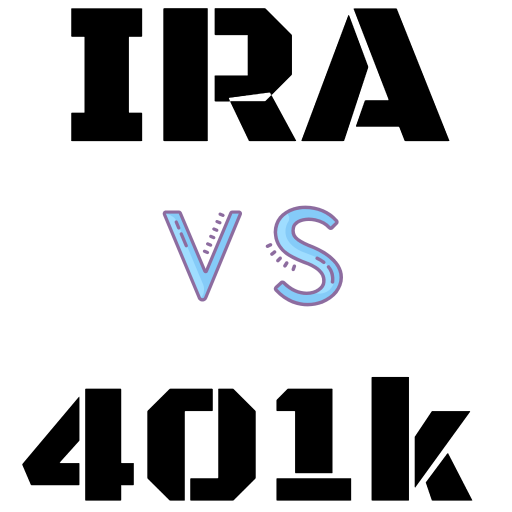
The Roth IRA is a unique type of investment account that offers every future retiree’s dream — the prospect of tax-free income after they reach retirement age.
Like any retirement account, however — and really, anything that has to do with the Internal Revenue Service (IRS) — there are rules that dictate who can contribute, how much money can be sheltered, and when those tax-free distributions can actually begin. To break it down:
- Contribution limits for Roth IRAs have been boosted to $6,000 for 2019, up from $5,500 in 2018.
- The Roth IRA five-year rule says you cannot withdraw earnings tax-free until it’s been at least five years since you contributed to a Roth IRA account.
- This rule applies to everyone who contributes to a Roth IRA, whether they just turned 59 ½ or 105.
Roth IRA income and contribution limits
The concept behind the Roth IRA is simple. Investors who meet income guidelines can deposit money into this account on an after-tax basis and receive tax-free distributions once they reach retirement.
In 2019, individuals up to certain income caps can contribute up to $6,000 to a Roth IRA account (up from $5,500 in 2018). Those ages 50 and older can contribute up to $7,000 for the year using what is known as a “catch up contribution.”
You can pull in a healthy income and still contribute to a Roth IRA, but income caps could put the brakes on your contributions if you are an especially high earner. In 2019, contributions are phased out for those married filing jointly who earn between $193,000 and $203,000 and end altogether for incomes that exceed that amount. For single filers, contribution amounts are reduced for incomes between $122,000 and $137,000 and end there. Keep in mind, however, that your ability to contribute to a Roth IRA is based on your modified adjusted gross income, or MAGI.
Since we’re talking about contributions, it’s important to note that anyone (of any age) who contributes to a Roth IRA can withdraw their contributions at any time without penalty. The key word here is contributions though, since you cannot normally withdraw your earnings prior to age 59 ½ without paying a 10% early withdrawal penalty. Earnings can generally be withdrawn without penalties after age 59 ½ provided you meet the five-year rule.
Savers don’t need to do anything special to ensure that only the contributions are withdrawn since the IRS has rules that dictate which funds are removed from the account first.
The IRS decrees that Roth IRA distributions are taken in this order:
- Contributions
- Conversions or rollover contributions
- Earnings on investments
The Roth IRA five-year rule
While plenty of people understand the tax savings one can glean by investing post-tax income into a Roth IRA, another lesser known rule could foil your withdrawal plans if you don’t know about it ahead of time.
The 5-year rule for Roth IRA distributions stipulates that 5 years must have passed since the tax year of your first Roth IRA contribution before you can withdraw the earnings in the account tax-free. Keep in mind that the five year clock begins ticking on January 1st of the year you made your first contribution to the account.
The Roth IRA is a retirement saver’s dream, but only after this important rule has been followed. Five years must have elapsed since the tax year of your first Roth contribution before the earnings can be withdrawn tax-free. That applies across the board to retirees, even if the account owner is 110 years old, a first-time homebuyer or deceased.
Also note that Roth IRA conversions have their own five-year clock that starts on January 1st of the year the conversion was made. Inherited Roth IRAs have their own clock as well, but it starts with the original account owner and when they made their first contributions — not when the person inherited it.
Qualified vs. non-qualified distributions
Contributing to a Roth IRA is the easy part, but there’s a learning curve to understanding which distributions are qualified, which ones are non-qualified, and when exactly exceptions can be made.
Qualified distributions
Provided a Roth IRA participant meets the five-year rule for distributions, any distribution is considered qualified provided at least one of these conditions is met:
- The plan participant is age 59 ½ or older
- A death or disability helps the plan participant qualify for an exception
- A first-time home purchase is being made (up to a $10,000 cap)
Imagine for a moment that you opened a Roth IRA in 2015 at age 58 and contributed $5,000 per year in 2015, 2016, 2017, and 2018. Even though you turned 59 ½ in your second year of contributing to a Roth IRA, you would not be eligible to take distributions from your account without paying taxes until five years had lapsed. At that point, however, your distributions would be considered qualified and entirely tax and penalty-free since you are over the age of 59 ½ and have satisfied the five-year rule.
Non-qualified distributions
Unless an exception applies, distributions that do not meet the requirements to be considered “qualified” will be subject to ordinary income taxes and a 10% early withdrawal penalty.
As we mentioned before, however, taxes and penalties only apply when a consumer wants to withdraw their Roth IRA earnings. Anyone who uses a Roth can withdraw their Roth IRA contributions at any time without penalty.
When can you withdraw from a Roth IRA without penalty?
Pull your earnings out of a Roth IRA account too early and you will pay income taxes on those amounts as well as face a penalty amounting to another 10%, except in certain situations. We already mentioned how you can take up to $10,000 out of a Roth IRA account without penalty early for the purchase of your first home, if you become disabled, or if the distribution is made to your estate after you pass away.
Other exceptions to be aware of include:
- You’re using the funds to pay qualified higher education expenses for yourself or eligible family members
- You’re using the funds to reimburse yourself for medical expenses that exceed 10% of your adjusted gross income
- You need to use the funds to cover health insurance premiums in the event you become unemployed
- You agree to accept substantially equal periodic payments for five years or until you become age 59 ½, whichever happens last
- An IRS levy has been made against your plan
Roth IRA withdrawal timeline
Now that we’ve explained all the rules and exceptions, here’s a basic rundown of Roth IRA distribution rules for each age group.
Ages 59 and under with a Roth IRA you’ve had less than five years:
- You can withdraw up to a $10,000 lifetime cap for a first-time home purchase without penalties
- Withdraw funds for qualified higher education expenses without penalties
- Withdraw funds if you become disabled or pass away
- Withdraw funds for unreimbursed medical expenses that exceed 10% of your AGI
- Withdraw funds for health insurance premiums if you’re self-employed
- You’ve agreed to withdraw funds in substantially equal period payments
Ages 59 and under with a Roth IRA you’ve had more than five years:
- You can withdraw up to a $10,000 lifetime cap for a first-time home purchase without penalties
- Withdraw funds if you become disabled or pass away
- Withdraw funds for unreimbursed medical expenses that exceed 10% of your AGI
- Withdraw funds for health insurance premiums if you’re self-employed
- You’ve agreed to withdraw funds in substantially equal period payments
Ages 59 ½ to 70:
- If you’ve met requirements for the five-year rule, you can withdraw money from your Roth without any taxes or penalties
- If you haven’t yet met requirements for the five-year rule, your earnings will be subject to income taxes (but not penalties)
Ages 70 ½ and over:
- If you’ve met requirements for the five-year rule, you can withdraw money from your Roth without any taxes or penalties
- If you haven’t yet met requirements for the five-year rule, your earnings will be subject to income taxes (but not penalties)
Bottom line
Roth IRAs can be absolute magic for future retirees who contribute often and follow the rules, including the five-year rule on distributions. But, like anything else the IRS gives, the tax benefits Roth IRAs offer can be taken away at the drop of a hat.
Before you start investing with a Roth, make sure you know the rules that dictate how much you can save and when you can get your money. While the five-year rule may not have been on your radar before, you now know how it works — and how to get the clock to start ticking.
